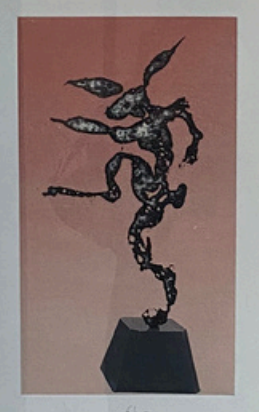Barry Flanagan (1941–2009) – The Master of Sculpted Motion
Barry Flanagan was a British sculptor renowned for his whimsical, dynamic bronze hares, which became his signature works. Born in Prestatyn, Wales, he studied at St. Martin’s School of Art in London, where he initially experimented with minimalist and conceptual art before turning to figurative sculpture in the 1970s.
Flanagan’s leaping and dancing hares, inspired by their symbolism in folklore and mythology, captured a sense of energy, movement, and playfulness. His work often reflected influences from Surrealism, Dada, and traditional European sculpture, blending spontaneity with a deep understanding of form.
Throughout his career, Flanagan exhibited at major international galleries, including the Tate, MoMA, and Venice Biennale. His monumental bronze sculptures can be found in public spaces worldwide, making him one of the most celebrated sculptors of his generation.


